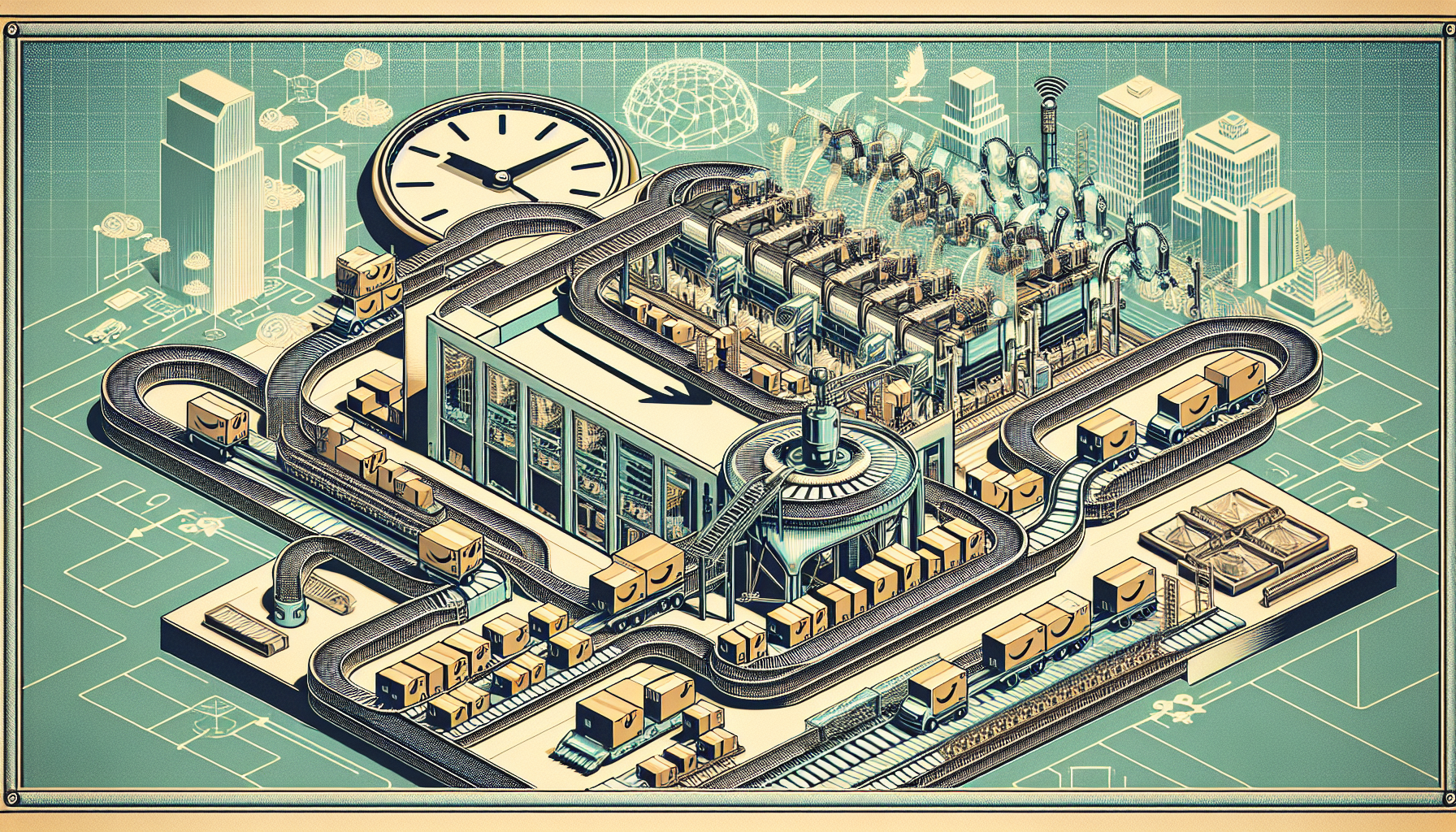Amazon has long been a trailblazer in fast package delivery, constantly pushing the limits to make logistics more efficient. Now, the company is turning to generative AI to further speed up its same-day delivery services. Since revolutionizing the industry with its two-day shipping back in 2005 with the Prime program, Amazon has continued to innovate. By March 2024, 60% of Prime orders in the top 60 U.S. metropolitan areas were delivered on the same day or the next day. Amazon aims to improve even further by embracing generative AI.
### Enhancements in Delivery Routes and Warehouse Operations
Generative AI is transforming key facets of Amazon’s delivery system:
1. **Optimized Delivery Routes**
Generative AI helps Amazon create more efficient delivery routes. The system can anticipate road closures and choose the most direct paths. This not only gets packages to customers faster but also reduces the carbon footprint of Amazon’s delivery network. Over 20 machine learning models are at work refining these routes for more sustainable operations.
2. **Smarter Warehouse Robots**
AI transformer models are making Amazon’s warehouse robots smarter. The number of robots in Amazon’s warehouses soared from 750,000 in 2021 to over 1 million by 2023. These robots now move in a synchronized manner, often described as “the dance floor” by Amazon’s president of technology and services, Armato. This coordination boosts efficiency and helps prioritize tasks like next-day deliveries.
3. **Ergonomic Workspaces**
Generative AI is also enhancing the workspace for Amazon employees. Algorithms position fast-selling items at waist height, minimizing the need for employees to reach or bend. This makes the workplace more comfortable and increases productivity.
4. **Improved Inventory Predictions**
AI algorithms predict inventory needs more accurately, even for new products without historical sales data. By positioning items correctly in advance of purchases, Amazon reduces the distance items travel, speeding up delivery times and enhancing sustainability.
### Technological Advancements and Partnerships
Amazon has been leveraging transformer architecture since 2020 to forecast demand and streamline its supply chain. By 2022, these AI models were integrated into warehouse robots, making them better at navigating around each other.
In addition to its own technology, Amazon collaborates with AI startups like Covariant. These partnerships enhance the robots’ ability to handle various physical objects, increasing efficiency and adaptability.
### Challenges and Concerns
While generative AI brings many benefits, it also presents challenges:
1. **High Energy Consumption**
Training and running generative AI models consume a lot of energy. This is a significant hurdle for Amazon, which aims to achieve net-zero carbon emissions by 2040. The energy demand for these models is comparable to the yearly energy use of countries like Sweden or the Netherlands.
2. **Impact on Human Workforce**
There are worries that more AI and robots could replace human jobs. Amazon contends that these technologies are meant to aid human workers, reducing physical strain and boosting overall efficiency.
### Conclusion
Amazon’s use of generative AI in logistics is a major leap in its pursuit of quicker, more efficient delivery services. Despite facing challenges, the advantages in route optimization, smarter robotics, and better inventory management are apparent. Through continued innovation, Amazon remains a leader in the e-commerce industry, setting the bar high for speed and efficiency in package delivery.

Leave a Reply